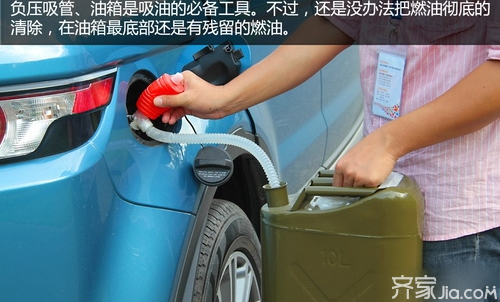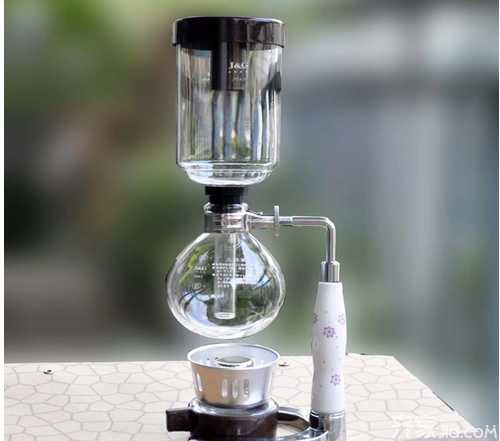The flush toilets we use now, some showers, some irrigation sprinklers on the lawn outside, etc., all of which are carried out using the siphon principle. It can be said that this principle is ubiquitous in our lives. So what is a siphon ? What are its characteristics? Next Xiaobian will introduce it to everyone.

First, what is siphon is the principle of the connected vessel. The pressure on the liquid in the closed vessel is equal everywhere. The siphon is filled with water and there is no gas. The water level at the end of the siphon is high, and the water outlet is closed with the palm or other objects. The pressure inside the tube is equal everywhere. After everything is settled, the water outlet is opened. Although the atmospheric pressures on both sides are equal, the water level at the water end is high, and the pressure is strong, pushing the incoming water out of the water outlet. The phenomenon of siphoning is caused by the difference between the gravitational force and the potential energy of the liquid molecules, that is, the differential pressure of the water column causes the water to rise and then flow to a lower level. Because the water surface of the nozzle is subject to different atmospheric pressure, the water will flow from the high pressure side to the low pressure side until the atmospheric pressures on both sides are equal, and the water level inside the container becomes the same height, and the water will stop flowing. Using siphoning, the water in the container can be quickly extracted.
Second, siphon applications because the corresponding pressure on both sides is basically the same, the corresponding high position of the nozzle due to the depth of the liquid surface is far in a relatively low position, that is, than the lower position of the mouth into the liquid surface The depth is even lower, so we know that from the nozzle, the pressure at the corresponding lower nozzle is greater, but the liquid will still flow from the upper container to the lower container. Therefore, we know the reason for this phenomenon is that the pressure here can only be transmitted to the liquid surface. Although the tube in the low cup has high pressure, it can't reach the high cup, so the liquid will flow down.
For modern products, there is also something made using the principle of siphons, and it is surrounded by us. Such as flush toilets, there are irrigation catheters. Some shower equipment also has these things.

3. Siphon Source Siphon is an ancient invention of mankind. As early as in the 1st century BC, there was a strange syphon. The Chinese knew how to apply the siphon principle very early. The siphon tube manufactured by applying the siphon principle was called "Note", "Partial", "Thirsty Ukraine" or "Over Mountain Dragon" in ancient China. In the last years of the Eastern Han Dynasty there was thirst for irrigation. The ethnic minorities in the southwest region used a long curved bamboo tube to drink alcohol, which was also a physical phenomenon that applied siphon. In the Song Dynasty Zeng Gongliang's "General Wu Jing", a bamboo siphon tube was used to record the spring water blocked by the steep mountains. In ancient China, the siphon principle was also used to make a scorpion cone. Slug is an essential fire extinguisher in the war. In Song Dynasty Su Shi's "Dongpo Zhilin," Volume IV, it was recorded that Sichuan salt wells used saline water to suck salt water into the ground. The book contains: Take bamboo as a tube, "Without the bottom and licking it, hang a few inches from the skin, enter and exit the water, breathe from the air and open and close it, and a bucket causes water to fight. The Ming Dynasty Zhuang Yuanchen was in the "Uncle's House". The article also pointed out that the gourd spoon was pressed into the water and the water did not enter the gourd because of the air in the gourd.

Xiaobian conclusion: What is siphon , I believe we read the above article has a deeper understanding of siphon. In fact, the application of the siphon principle in engineering is more and more obvious. In the drainage engineering, various projects in water conservancy projects have applications. For more relevant knowledge, please continue to pay attention to this website information platform.

First, what is siphon is the principle of the connected vessel. The pressure on the liquid in the closed vessel is equal everywhere. The siphon is filled with water and there is no gas. The water level at the end of the siphon is high, and the water outlet is closed with the palm or other objects. The pressure inside the tube is equal everywhere. After everything is settled, the water outlet is opened. Although the atmospheric pressures on both sides are equal, the water level at the water end is high, and the pressure is strong, pushing the incoming water out of the water outlet. The phenomenon of siphoning is caused by the difference between the gravitational force and the potential energy of the liquid molecules, that is, the differential pressure of the water column causes the water to rise and then flow to a lower level. Because the water surface of the nozzle is subject to different atmospheric pressure, the water will flow from the high pressure side to the low pressure side until the atmospheric pressures on both sides are equal, and the water level inside the container becomes the same height, and the water will stop flowing. Using siphoning, the water in the container can be quickly extracted.
Second, siphon applications because the corresponding pressure on both sides is basically the same, the corresponding high position of the nozzle due to the depth of the liquid surface is far in a relatively low position, that is, than the lower position of the mouth into the liquid surface The depth is even lower, so we know that from the nozzle, the pressure at the corresponding lower nozzle is greater, but the liquid will still flow from the upper container to the lower container. Therefore, we know the reason for this phenomenon is that the pressure here can only be transmitted to the liquid surface. Although the tube in the low cup has high pressure, it can't reach the high cup, so the liquid will flow down.
For modern products, there is also something made using the principle of siphons, and it is surrounded by us. Such as flush toilets, there are irrigation catheters. Some shower equipment also has these things.

3. Siphon Source Siphon is an ancient invention of mankind. As early as in the 1st century BC, there was a strange syphon. The Chinese knew how to apply the siphon principle very early. The siphon tube manufactured by applying the siphon principle was called "Note", "Partial", "Thirsty Ukraine" or "Over Mountain Dragon" in ancient China. In the last years of the Eastern Han Dynasty there was thirst for irrigation. The ethnic minorities in the southwest region used a long curved bamboo tube to drink alcohol, which was also a physical phenomenon that applied siphon. In the Song Dynasty Zeng Gongliang's "General Wu Jing", a bamboo siphon tube was used to record the spring water blocked by the steep mountains. In ancient China, the siphon principle was also used to make a scorpion cone. Slug is an essential fire extinguisher in the war. In Song Dynasty Su Shi's "Dongpo Zhilin," Volume IV, it was recorded that Sichuan salt wells used saline water to suck salt water into the ground. The book contains: Take bamboo as a tube, "Without the bottom and licking it, hang a few inches from the skin, enter and exit the water, breathe from the air and open and close it, and a bucket causes water to fight. The Ming Dynasty Zhuang Yuanchen was in the "Uncle's House". The article also pointed out that the gourd spoon was pressed into the water and the water did not enter the gourd because of the air in the gourd.

Xiaobian conclusion: What is siphon , I believe we read the above article has a deeper understanding of siphon. In fact, the application of the siphon principle in engineering is more and more obvious. In the drainage engineering, various projects in water conservancy projects have applications. For more relevant knowledge, please continue to pay attention to this website information platform.
Siphon principle
Wire Mesh Fence,Chicken Wire Fence,Chicken Wire Mesh,Garden Wire Fence
ANPING HONGYU WIREMESH CO.,LTD , https://www.hongyufence.com
![<?echo $_SERVER['SERVER_NAME'];?>](/template/twentyseventeen/skin/images/header.jpg)